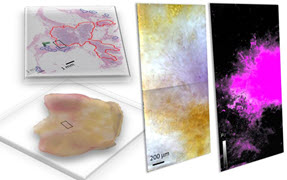Innovative sensing for real-time health monitoring of geostructural systems
Over the last 50 years engineers have used traditional, manual slope inclinometers to monitor the health of landslides and construction activities. However, the frequency and accuracy of this labor-intensive monitoring rely on a trained engineer manually collecting and managing the data. The low sensor density provided by this method results in very limited data. State departments of transportation and federal agencies continue to spend significant resources monitoring possible slope failures using manual inclinometers or in-place inclinometer arrays. The expense and inflexibility of the slope inclinometer arrays, and the need for torsional alignment, make installation of multiple setups at a single site relatively rare, severely limiting the ability to conduct pervasive real-time monitoring. The wireless SAA system can remotely collect both 3D deformation and acceleration readings anywhere there is cell-phone coverage.
The SAA system enables gravity-based shape calculation along a sensorized substrate through an extension of technologies that use fiber-optic orientation sensing to calculate 3D polylines representing the shape of a sensor array.3 The SAA uses microelectromechanical systems (MEMS) accelerometers in a precalibrated, geometrically constrained arrangement4 to provide long-term stability previously unattainable with fiber-optic methods. This sensor array is capable of measuring 3D soil acceleration and permanent ground deformation to a depth of 100m at one-tenth the cost of existing inclinometer and borehole technologies. Each sensor array is connected to a wireless earth station to enable real-time monitoring of a wide range of soil and soil-structure systems as well as remote sensor configuration. SAAs can be placed vertically or horizontally in soil and soil-structure systems.

The SAA is a segmented array, flexible in two degrees of freedom between segments. SAAs are designed to provide high-resolution measurement in time (sampling rate higher than 70Hz for dynamic measurement) and space (segments can be as short as 0.25m), and contain modular components to enable variable sensor spacing and multiplexing. Two slightly different versions of the SAA were developed, with wireless acquisition for in situ (field) installation or with enhanced acquisition bandwidth and high sampling rate for laboratory research installations. The in situ version of the array has been installed to monitor soil-structure systems of interest such as an active slope5 (see Figure 1), a state-of-the-art retaining wall, and a bridge replacement on a deep deposit of very soft clay.
The SAA system is built in subarrays, a contiguous grouping of 0.30m-long, 25mm-diameter rigid segments, each segment having a microprocessor that collects data from triaxial MEMS accelerometers. A calibration subroutine allows adjustment of the torsional offsets between the subarrays while they are concatenated into a full, calibrated array, which is packaged on a 1.22m reel. High flexibility and high sensor density enable enhanced spatial resolution along the array and the ability to capture even significantly distorted shapes. Torsional constraint and 3D precalibration of the SAA eliminate the need for costly torsional alignment systems, such as grooved casings. Wireless field data from three SAA systems indicates a repeatability of better than (±)1.5mm in 32m (0.05mm/m) over extended periods of time (eight months) and hundreds of readings in nonmoving portions of the soil system. Figure 2 presents a shape comparison between the SAA system and a traditional inclinometer reading for a five-month period of monitoring. Cumulative displacements remain less than 8mm for both measurement systems, but the general trends are visible and comparable.
The wireless SAA system constitutes a major step toward autonomous monitoring technology for soil and soil-structure systems. Data obtained with the high sensor density of the SAAs can be used along with system identification, inverse problem tools, and other data-reduction techniques to extract information on the health status and material stiffness properties of soil and soil-structure systems. This information can provide feedback aimed at redesign during the building of new structures and is also useful for health monitoring and decision making for existing soil and soil-structure systems.
We gratefully acknowledge the support of the US National Science Foundation sensor program. The authors would also like to express their gratitude to Caltrans and NYSDOT (New York State Department of Transportation) for their support in this project. The photograph in Figure 1 is courtesy of RPI.




